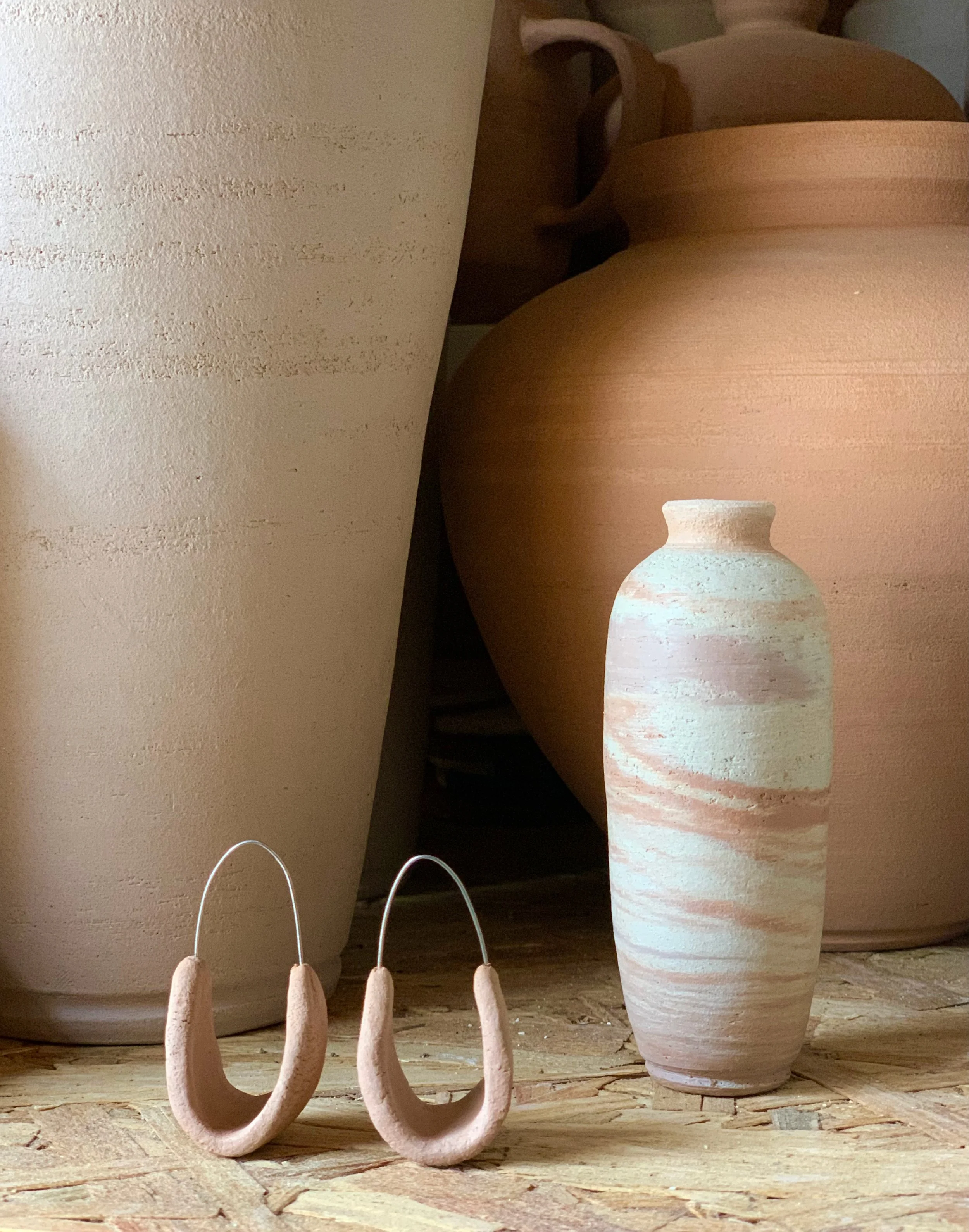size matters
Working at different scales exercises different parts of my skill set. There are challenges to throwing small that are very different from the same shape at a larger size.
Painting patterns
Creating patterns with underglaze is a big part of my process. I’ve come to love the challenge of picking colors (which change during firing) and laying out designs on the bisque-ware. From an ROI perspective, this approach makes little sense. But I love the result so much!
wax on, glaze off
To achieve the combination of colorful underglaze and matte white liner glaze, I apply a coat of wax resist to the painted underglaze before dipping the pot in the liquid glaze. I then meticulously wipe any remaining glaze off the design. It’s always amazing how the colors transform during the firing!
devilish details
I spend a lot of time perfecting the foot of my pots, a part that some would think matters least. But, as most potters know, the foot is where you can determine the skill and dedication of the maker.
Throwing a medium vase in my garage studio in January 2025. Video is sped up 2X and there is one cut to delete the time I spent cleaning slip off my hands. Watching this I also realize that I make a lot of funny faces when I throw….




